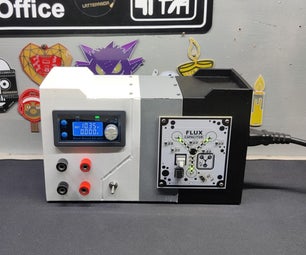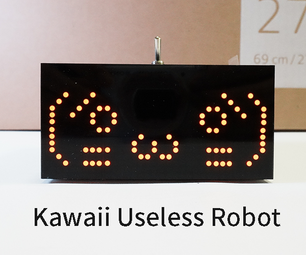Introduction: DYI USB Midi Controller
How to make an affordable large midi controller for DJ, VJ and producers?
This midi controller is based on Arduino Micro, support on board: 64 analog inputs, 64 digital inputs and interface for connecting other 32 digital inputs. Digital inputs are usable for encoders. In this configuration response of analog inputs is 250ms and digital inputs is 16ms.
This is the result of my work for the year of testing...
Unfortunately I do not have enough time, so writing will be longer.
Update code for analog inputs response about 100ms.
Step 1: Planning
The first step is components selection.
Rotary potentiometers - good quality Bourns PTV111-3415A-B103 / ALPS RK11 series, cheaper option is ALPS RK09K series.
Slide potentiometers - ALPS RS60N1119006 logarithmic 60mm travel or other according to you choose. (logarithmic for audio, linear for lights)
Encoders - Bourns PEC11R-4215F-S0024 (24 detents, with switch).
Buttons - according to your preference, but they should not be noisy (my choose is Highly KS01-BV).
Brain section:
Arduino Micro board
74HC4067 (SOP24)
PCF8575 (SOP24)
10k (0805)
10k (0204)
100nF (0805)
IDC connectors 2 x 5 pins and cables 10 lines
Cliff K85 rotary knobs with selectable caps
All components can be bought for about 300 $ without PCB and front panel. PCB and the front panel cost about 100 $.
Step 2: Wiring
Arduino Micro board
4 x 74HC4067 - 16 channel analog multiplexer
Every one 4067 use only one analog input of Arduino. Driving with four digital pins.
4 x PCF8575 - 16 bit I/O expansion for I2C + 2 x PCF8575 external interface option
Every two PCF8575 use one Arduino interrupt pin.
10 x Encoders withs capatitors and resistors for HW debounce.
53 x Potentiometers + 8 slide
32 x Switches - debounce is the same as in case of the encoders.
Update - two int section are connected to Vcc over resistor 10k.
Step 3: PCB Brain
PCB is double sided. I made pcb by my self and all junction on top and bottom side is made with wire - see at soldering part.
Update - now I have a new design of pcb with 32u4 chip on the board and RJ45 connector.
Step 4: PCB Analog
Analog potentiometers have distance 30 mm at the same channel and 32,5 mm between the channels. PCB dimensions 120 x 52 mm.
Slide potentioteres are single logarithmic with solder lugs and T bar actuator.
Step 5: PCB Digital
Buttons PCB dimensions 115 x 35 mm.
Encoders PCB have 121 x 24 mm and they are double sided.
Step 6: PCB Master
Master PCB dimensions 31 x 209 mm and two output, one digital and one analog.
Update - two digital pins not connected to the ground.
Step 7: PCB Soldering
You don't need hot air necessarily. All components could be soldered with small soldering station, tweezers and souder paste tin cream.
If you don't know how to solder SMD, find inctruction online and make some practise first.
For junctioning the top and bottom side PCB use unisolated wire ovelapping both side above 1 mm and squeeze them together. That makes small rivet and solders it.
Step 8: Front Plate Design
My design come from analog mixing console. Best is to make it by laser, you save your time. Actually my piece is in production right now.
Update - first version have small hole dia... Encoders dia - 7.5 mm, potentiometers dia - 9.5 mm, buttons dia - 9.5 mm. New drawing will be uploaded...
Attachments
Step 9: Programming
Code is fully function for brain v2 , but if you use v1 make changes in four 4067 directional pins (5, 9, 10, 13).
Analog:
// select 4067 channel Y0 (pin 9)
digitalWrite(13, LOW); // S0 - 4067 pin 10
digitalWrite(5, LOW); // S1 - 4067 pin 11
digitalWrite(9, LOW); // S2 - 4067 pin 14
digitalWrite(10, LOW); // S3 - 4067 pin 13
delayMicroseconds(2); // delay for signals to stabilize
ka[0] = analogRead(0) / 8;
if (abs(ka[0] - kaL[0]) > analogAttach) {
controlChange(16, ka[0]);
if (debug) {
Serial.print("16 ka0 - ");
Serial.println(ka[0]);
}
kaL[0] = ka[0];
}
...
I don't use loops, the code is a little messy, but save 15 x 4 x 2ms time to stabilize chips.
digital buttons:
after read pcf lo + hi
// buttons btnM1
for (uint8_t i = 0; i < 8; i++) {
btnM1[i] = (bitRead(lo_data, i ));
if (btnM1[i] != btnM1L[i]) {
if (btnM1[i] == 0) {
noteOn(i + 24, 127); // 24 - C1 > start midi note (31 - G1 > end)
if (debug) {
pressed(1, i, i + 24);
}
}
if (btnM1[i] == 1) {
noteOff(i + 24, 0);
if (debug) {
released(1, i, i + 24);
}
}
btnM1L[i] = btnM1[i];
}
}
...
digital encoders:
// encoder 6
// count encoder pulse
if (encM1[7] != encM1L[7] || encM1[0] != encM1L[0]) {
counter_enc6++;
if (debug) {
Serial.print("counter_enc6 - ");
Serial.println(counter_enc6);
}
}
if (counter_enc6 == 3) {
if (encM1[0] == 0 && encM1[7] == 1) {
controlChange(70, 127);
if (debug) {
Serial.println("enc 6 - 70 <<");
}
}
if (encM1[7] == 0 && encM1[0] == 1) {
controlChange(70, 1);
if (debug) {
Serial.println("enc 6 - 70 >>");
}
}
counter_enc6 = 0;
}
// reset rotation pulse if rotate other encoder
if (encM1[7] == 1 && encM1[0] == 1) {
counter_enc6 = 0;
}
...
Encoders count impulse and evaluate only every third pulse.
Attachments
Step 10: Testing
Code have debug function.
Boolean debug and boolean debug_code should be switched to true. But in this case, if serial monitor is not present, controller will not working properly.
Boolean debug_code - enable counter of runnig whole code per 10s
Boolean debug:
- send info about any potentiometer - number of potentiometer (CC channel), module id, value if changed.
- send info about any button - module id, number of button and value.
- send info about encoder - module id, number of encoder and << or >>.
- all int send pcf lo + hi value when it change values, in binary.
All midi signals should be captured with Midi-OX.
Step 11: Assembly
The lower part is made of plywood 4mm and wooden sticks 8 x 30 mm.








